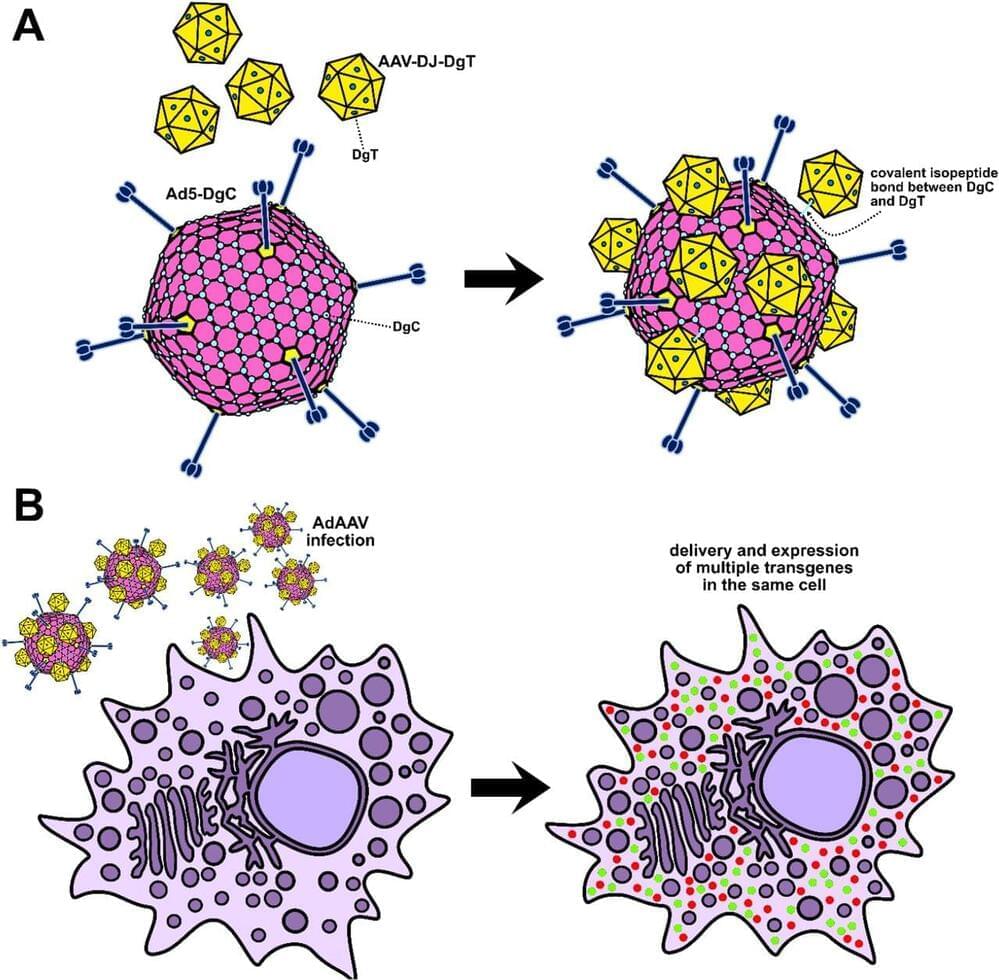Adeno-associated virus (AAV) has found immense success as a delivery system for gene therapy, yet the small 4.7 kb packaging capacity of the AAV sharply limits the scope of its application. In addition, high doses of AAV are frequently required to facilitate therapeutic effects, leading to acute toxicity issues. While dual and triple AAV approaches have been developed to mitigate the packaging capacity problem, these necessitate even higher doses to ensure that co-infection occurs at sufficient frequency. To address these challenges, we herein describe a novel delivery system consisting of adenovirus (Ad) covalently linked to multiple adeno-associated virus (AAV) capsids as a new way of more efficiently co-infecting cells with lower overall amounts of AAVs. We utilize the DogTag-DogCatcher (DgT-DgC) molecular glue system to construct our AdAAVs and we demonstrate that these hybrid virus complexes achieve enhanced co-transduction of cultured cells. This technology may eventually broaden the utility of AAV gene delivery by providing an alternative to dual or triple AAV which can be employed at lower dose while reaching higher co-transduction efficiency.
Although adeno-associated virus (AAV) gene therapy has shown enormous promise and led to five clinically approved treatments,1–3 it is consistently hampered by the vector’s low DNA packaging capacity of 4.7 kb. Great effort has gone into developing dual AAV systems, which deliver two parts of a therapeutic gene in separate capsids that aim to co-infect the same cells.4–7 Analogous triple AAV systems have also been explored.8,9 Dual and triple AAV systems can recombine their split genes into complete form through mechanisms of DNA trans-splicing, RNA trans-splicing, or protein splicing via split inteins.5,7 However, dual and triple AAVs typically require higher doses to achieve efficient co-transduction of cells, especially when systemic administration is necessary.10 This makes sense since the likelihood of two or three cargos reaching the same cell should roughly correspond to the proportion of a single cargo reaching the cell squared or cubed respectively.
